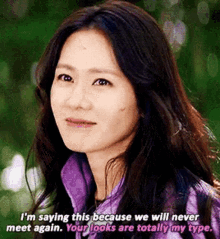"Men are afraid that women will laugh at them. Women are afraid that men will kill them." — The Handmaid’s Tale
Have you ever imagined living in a society where only one in five women is fertile? What if, in the face of this crisis, an extremist group took control of the government with the promise of restoring “simpler times”? Now think: who would be most affected by this new order?
This is the reality presented in The Handmaid’s Tale, a novel written by Margaret Atwood and published in 1985. Despite being a work of dystopian fiction, it comes frighteningly close to historical—and even contemporary—realities.
As we approach the sixth and final season of the Hulu adaptation of The Handmaid’s Tale, it comes at a good time to discuss again the importance of women’s rights and how to protect them. In this article, we’ll go through what The Handmaid’s Tale is about and how it connects to certain aspects of our lives.

Image Credits: Kai Medina from Wikimedia Commons
Let us slide into your dms 🥰
Get notified of top trending articles like this one every week! (we won't spam you)The Handmaid's Tale Summary
The plot unfolds in the Republic of Gilead, a theocratic and authoritarian regime that has taken hold in what was once part of the United States. After an environmental collapse that affects fertility, an extremist group, called the “Sons of Jacob,” seizes power. They promise to restore moral order and increase the birth rate, but their true project is to control women's bodies and suppress any form of individual freedom.
Under this new regime, women lose all their rights. They are prevented from working, studying, owning property, and even reading. They are also classified into castes, of which I will list the four main ones:
- The Marthas: they are responsible for domestic tasks in the Commanders' homes, representing how women are reduced to functional roles—in this case, caretakers and laborers—without personal freedom. The grayish brown color of their uniforms is purposefully chosen to make them invisible.
- The Aunts: they are women granted a certain level of power as they are trusted to enforce the regime's values, including training and controlling handmaids. The Aunts reflect how authoritarian regimes use members of oppressed groups to maintain control over others of the same group, often pitting women against each other.
- The Wives: the wives of the Commanders, they live in a position of social prestige, but are infertile. They wear blue, a symbol of purity, and maintain an elegant and modest appearance. Even so, their function is purely decorative.
- The Handmaids: the caste to which the book's protagonist belongs, it includes the few remaining fertile women who, for their supposed sins—such as being divorced, a single mother or a lesbian—have their children taken away, their rights repressed and a new role imposed: to bear children for the Commanders. They always wear red robes covering their entire body and white hats. Red represents fertility, but also oppression and surveillance.
It is easy to agree that this seems like any woman's worst nightmare. This social structure turns women into mere instruments of reproduction, subjected to physical, sexual, and psychological abuse under the pretext of serving a greater purpose.
And the worst part? The inspiration behind the story is not as fictional as we would like to believe. When interviewed about the origins of her work, Atwood responded with irony and frankness. “What century would you like me to talk about? What country? What state in the United States?”
Atwood points out how this reality is not as far away as we imagine. The horrors of Gilead have already happened somewhere, at some point in history. And, unfortunately, they continue to happen. Even today, millions of women in different parts of the world live under regimes and cultures that violate their most basic rights.

Image Credit: ActuaLitté from Wikimedia Commons

Take the Quiz: Which Female Character Trope Do You Belong To?
Whether it's in film, TV, or literature, you've likely come across these female character tropes. Take this quiz to discover which one best matches...
In the Footnotes of History
Women have historically been treated as inferior.
In ancient times, women in Mesopotamia, Egypt, Greece, Rome, and China often held a role of subservience to male figures. The rare exceptions recorded were about priestesses and queens. An interesting and little-known fact is that the first texts that included women's rights were found in India, but due to invasions by other peoples in addition to other historical factors, those rights were also restricted.
It does not take much study to know that women have always had their roles limited throughout most of history. Their functions were imposed upon them by others, and their figure was constructed from “the other”.
Even in history, we have been perceived short-sightedly and linearly: women went from being reproductive machines, to pretty decorations in the corner of the room, to invisible hands in factories, to finally individuals worthy of some rights. But reality doesn't work so simply. It often feels like one step forward and three steps back.
Our achievements as a society so far are few compared to the centuries of abuse and inferiority women have had to endure. The deconstruction of not only the lack of legislative representation but mainly social and psychological stereotypes is a long, ongoing task.
There are still many places in the world where women's rights are severely restricted or limited compared to those of men. However, it is not only under these regimes that women's rights are oppressed. In fact, we are susceptible to it at any time.

Image Credit: Jules Lefebvre from Wikimedia Commons
Nolite Te Bastardes Carborundorum
And how does all this, after all, bring us back to The Handmaid's Tale? Well, it's because that's how it all begins.
Throughout the book, the protagonist, whose name is unknown after she was renamed Offred by the regime, narrates her life before Gilead. She was an ordinary woman— she had a husband and a daughter, worked a job, drank more coffee than she should have, and liked to listen to Madonna.
She recalls the first signs that the situation for women was about to change. At first, Offred and her coworkers are fired, the only explanation from their boss being that women were legally prohibited from working. When she gets home, she discovers that her bank account has been frozen and her assets will be transferred to the male member closest to her. From one moment to the next, she sees all her independence crumble and her freedom to make decisions taken away.
She then thinks, The government wouldn’t do that. Oh yes, they would. The protagonist, like any other ordinary person—like me, like you, and like the vast majority—feels powerless and leaves it up to other people to protest and change the situation.
What’s my voice worth? What’s one more person in a crowd? Someone else will do it for me.

Image Credit: Scattered from Wikimedia Commons
But that doesn’t happen, and the plot of the book commences.
A dystopian society like that of The Handmaid’s Tale is always knocking on our door. It has been there since Margaret Atwood wrote the book, and even more so in the present day.
Historically, crises tend to make people more susceptible to political and ideological manipulation, which consequently leads to cultural changes.
This is demonstrated in fashion. The Hemline Index, originally written by George Taylor, is a theory that relates the length of women's skirts to economic conditions. Of course, something written in the 20th century would not apply exactly to today. Just because the economy is doing badly doesn't mean I'm going to buy a long skirt or vice versa.
The theory definitely has its flaws, but it makes us reflect on the position of women and factors such as political leaders, religious influence, and even the economy, as well as how all these are related.
Men create the world they want to live in. So it's up to women to continue fighting for their own space.
“Never forget that a political, economic, or religious crisis is enough for women's rights to be questioned” — Simone de Beauvoir
Margaret Atwood was not just writing about an absurd society. The message she wanted to convey in the 80s is unfortunately very much applicable today.
The Handmaid’s Tale is not just a work of literature. It is a warning. A reminder that rights once won remain vulnerable and that vigilance and resistance must be constant. If we are not careful, Gilead could go from being a literary dystopia to a real threat.
To incite the Handmaids to rebellion, in Latin neology: Nolite te bastardes carborundorum. Don’t let the bastards reduce you to ashes.

















